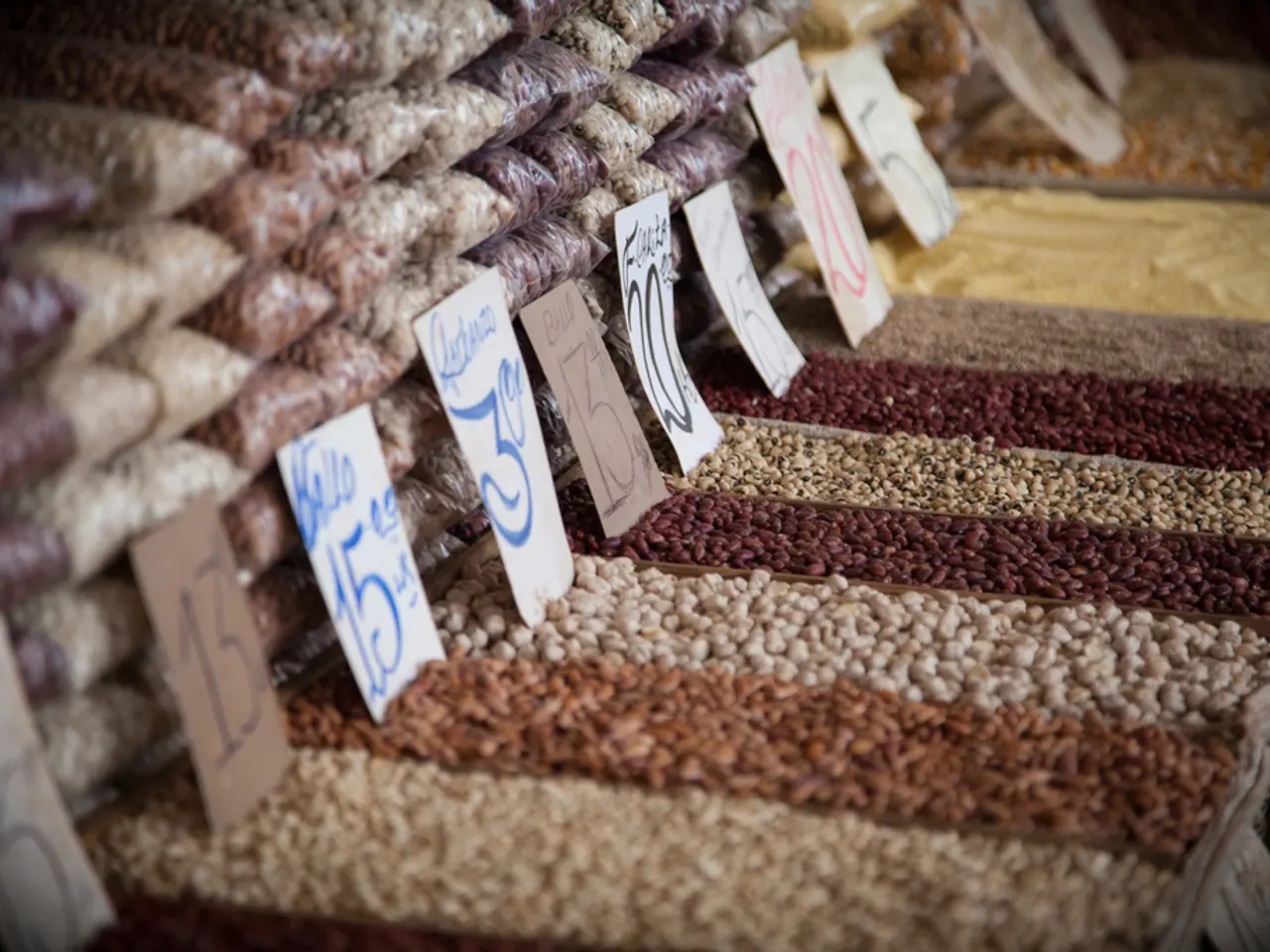Guidance on Growing Grains (and Crafting Sprouted Grain Powder)
Sprouted grain flour is making waves in the kitchen, offering a nutritious alternative to regular whole grain flour. This innovative flour is not just a trend, but a health-conscious choice for those seeking to enhance their diet with improved nutrient absorption and digestion.
The Power of Sprouting
Sprouting grains is a process that transforms whole grain berries into a more digestible and nutritious form. By soaking, rinsing, and allowing the grains to sprout over a period of 2 to 3 days, enzyme inhibitors naturally present in grains are broken down, making it easier for the body to digest and absorb nutrients such as proteins, vitamins, minerals, and essential fatty acids.
During germination, complex nutrients are enzymatically simplified, increasing their bioactivity and utilization by the body. For instance, minerals chelate with proteins, improving their absorption.
Nutritional Advantages
Compared to regular whole grain flour, sprouted grain flour generally boasts higher protein content and better protein quality, increased levels of vitamins, enzymes, fiber, and trace minerals, a lower glycemic index, and improved digestibility.
The lower glycemic index means that sprouted grain flour causes a slower, more stable rise in blood sugar levels after consumption, a significant advantage for those managing blood sugar levels.
Moreover, sprouted grain flour tends to be richer in antioxidants and may support better gut health by promoting beneficial bacteria growth.
Essential Tools for Sprouting
To embark on your sprouting journey, you'll need a grain grinder to grind sprouted grains into flour, a fine-mesh sieve for rinsing and aerating the grains, and a dehydrator to dry the sprouted grains at a relatively low temperature to prevent roasting.
Common grains like spelt, wheat, and rye can be found in local health food stores, while untreated oats for sprouting and einkorn berries may be less common and may need to be purchased online.
Preparation is Key
Proper preparation, including soaking, sprouting, and souring, is necessary to release the full array of nutrients in grains. When sprouting grains for flour, it's important not to let the sprouts grow too large to avoid malting the grains.
Oats are often treated with steam or heat and dried, so untreated oat groats should be purchased specifically for sprouting. A slow cooker or a large mixing bowl can be used for soaking grains.
To make sprouted grain flour, you'll need 1 pound of whole grain (such as rice, wheat berries, einkorn berries, spelt berries, etc.), 1 tablespoon of raw apple cider vinegar, and a large mixing bowl or the insert of a slow cooker.
In conclusion, sprouted grain flour offers several health benefits compared to regular whole grain flour, primarily due to the sprouting process that enhances nutrient bioavailability and digestion. By incorporating sprouted grain flour into your baking, you can enjoy the benefits of improved nutrient absorption, digestion, and blood sugar management.
- Start exploring healthy-cooking options at home by incorporating sprouted grain flour in your sourdough baking, as it offers a more nutritious alternative to regular whole grain flour and can be easily used in various food-and-drink recipes.
- Transform your home-and-garden lifestyle by embracing the natural power of sprouting, a process that not only enhances nutrient absorption and digestion, but also supports better gut health and promotes growth of beneficial bacteria.
- Embrace the comprehensive nutritional advantages of sprouting, as sprouted grain flour generally contains higher proteincontent, improved protein quality, increased vitamins, enzymes, fiber, trace minerals, lower glycemic index, and a richer source of antioxidants, making it a health-conscious choice for your food-and-drink lifestyle.




